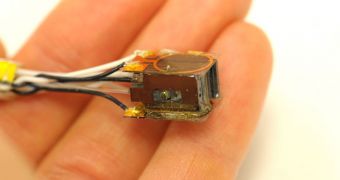A group of experts in the United States announces the development of a new, miniaturized, atom-based magnetic sensor. The device has already proven capable of measuring magnetic waves in the human brain, which means that it may soon be used for a variety of biomedical applications.
Investigators are especially interested in using these sensors to gain more insight into how human mental processes take place. At the same time, the research may reveal more data about a wide array of neurological diseases, the team behind the study says.
The sensors were developed by experts at the US National Institutes of Standards and Technology (NIST). Details of the work appear in a paper entitled “Magnetoencephalography with a chip-scale atomic magnetometer,” which was published in the latest issue of Biomedical Optics Express.
American experts worked closely with colleagues at the Physikalisch Technische Bundesanstalt (PTB) in Berlin, Germany. Together, the scientists used their novel sensors to study alpha wave patterns in the human brain.
In a series of experiments, the devices were also used to measure the effects that opening or closing the eyes had on test subjects' brains. The team also looked at how stimulating participants' hands influenced their brains.
The results obtained through this approach were compared to those collected by a superconducting quantum interference device (SQUID). The latter are the most sensitive, commercially available magnetometers on the planet.
At this point, the NIST sensor is not as sensitive as a SQUID, but it has the potential to become so as the technology is refined. However, it does exceed any competition in terms of cost, size and portability.
“We're focusing on making the sensors small, getting them close to the signal source, and making them manufacturable and ultimately low in cost,” NIST expert and study coauthor, Svenja Knappe, explains.
“By making an inexpensive system you could have one in every hospital to test for traumatic brain injuries and one for every football team,” the investigator goes on to say. The NIST sensors are capable of operating at room temperature, and are no larger than a sugar cube.

 14 DAY TRIAL //
14 DAY TRIAL //